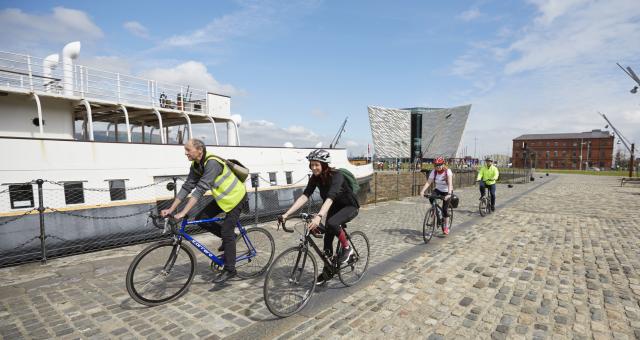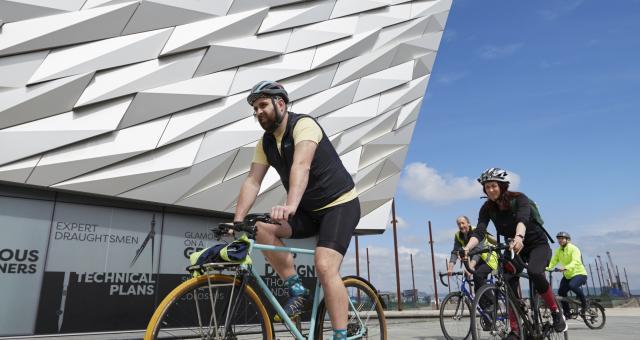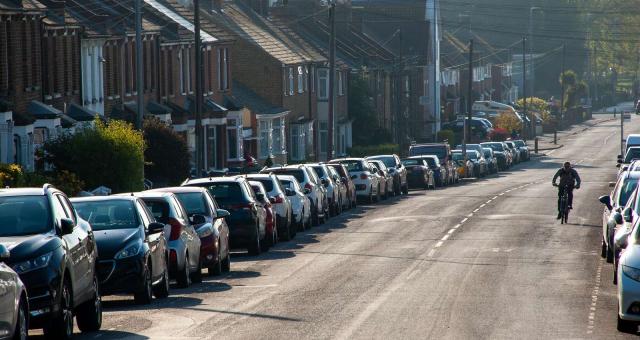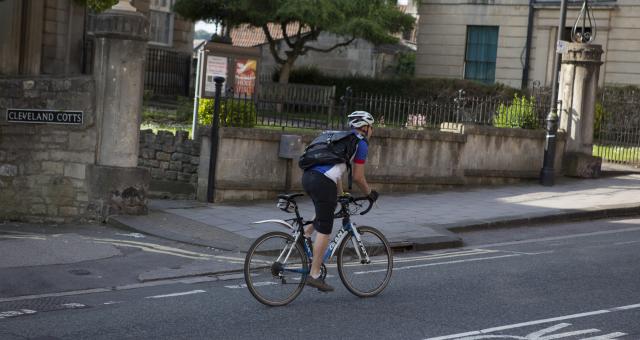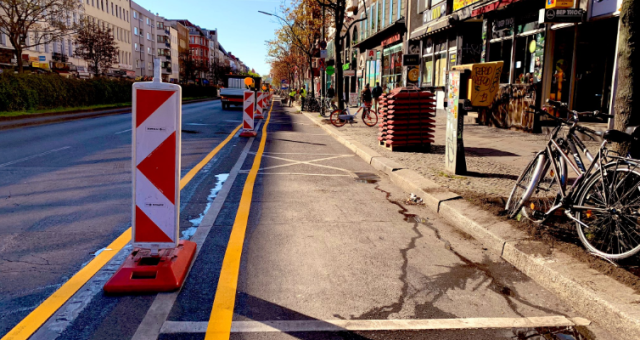What has changed for cycling in Northern Ireland during the last year?

Addressing the Northern Ireland Assembly just over a year ago (5 May 2020), Infrastructure Minister Nicola Mallon acknowledged that coronavirus “has forever changed the ways in which we live and work.” She went on to say: “In the darkness of the pandemic, we are being presented with an opportunity to reimagine those places, and it is one that we should seize.”
She spoke of the need to “deliver on our commitment to increase the percentage of journeys made by walking and cycling, thereby inspiring our communities, restructuring our spaces, changing forever the way in which we live and changing it for the better.”
The Minister also signalled her willingness for outside voices to “challenge” the Department and to ensure that opportunities to build on the positive changes that were being seen in terms of higher levels of walking and cycling.
Cycling UK joined with BikeFast, Cycul and NI Greenways on the one-year anniversary of the speech, in calling for change by asking the public to share their views on the progress to date by using the hashtag #ChallengeMyDepartment, and tagging the Department for Infrastructure on Twitter.
Not enough has been done to accommodate the rise in cycling and active travel. It has been a missed opportunity if you look at what has happened in other European cities like Paris and Dublin
Cycling UK's engagement officer for Northern Ireland, Josh Murray
Rather than focus solely on disappointments, the campaign also sought positive suggestions for change in the user’s local area - things which the Department for Infrastructure can and should deliver within the next year.
Among the suggestions we received, were calls to pedestrianise more town centres, and to introduce 20mph urban speed limits, as well as segregated paths into and out of town centres, which would enable children to cycle to school safely.
Cycling UK’s engagement officer for Northern Ireland, Josh Murray, also took the message to the airwaves during a drivetime interview on BBC Radio Ulster.
He said: “There have been a few measures introduced in the last 12 months such as pop-up cycle lanes and investment in some greenway infrastructure, but not enough has been done to accommodate the rise in cycling and active travel. It has been a missed opportunity if you look at what has happened in other European cities like Paris and Dublin to create more active, healthier, greener ways of living and travelling.”
Since the speech in May 2020, just 3,000 metres of temporary cycleways have been delivered in Belfast, one cycle route in Derry, and a handful of temporary traffic removal trials - but little else has progressed outside Belfast or Derry.
By comparison, many other cities around the world have moved swiftly to introduce radical changes to enable more people to walk, wheel, and cycle to reduce the amount of congestion on their streets. For example, in Barcelona, throughout 2020, 21km of streets in the Eixample district were transformed to enable cycling and walking by removing car lanes and parked cars, while in Dublin, 360million Euros per year has been committed for the next five years for investment in active travel, including a series of street pedestrianisation measures.
While not scientific, a quick poll of 100 people ahead of the #ChallengeMyDepartment campaign showed 98% support for the Minister's vision as outlined in the speech, but more than 9 out of 10 people (92%) thought there had been little or no progress to date, or that the progress that had been made was poor.
Cities, towns, and villages across Northern Ireland have seen people travelling actively more than ever during coronavirus, but these areas need an acceleration in investment to restart their local economies to reflect people’s new use of the spaces in which they live and work.
Minister Mallon acknowledged in her speech that investing in transport infrastructure would help "kick-start' the economy and could “deliver more for our citizens socially and economically, and deliver cleaner, greener and healthier communities.”
The next steps
The attention focused on the delivery (or lack) of active travel measures during the second half of 2020 and the first part of this year, has helped to energise campaigners, and the next steps will be to build on the reaction to the campaign. Josh says he is exploring how Cycling UK can develop its campaigner base in Northern Ireland to make sure more progress is made on active travel in the next 12 months than has been achieved to date.
In cities, towns and villages across Northern Ireland, more people have been cycling during the coronavirus pandemic, and the minister herself acknowledged in the speech investing in transport infrastructure would help "kick-start' the economy. Without that investment now, active travel will be a forgotten aspect of economic recovery.
If you have ideas for active travel projects in your local area or you would like to find out more about connecting with other campaigners to speak with a stronger voice for more joined-up cycling measures and safer streets, contact Josh Murray.
If you live in England, Scotland, or Wales and are interested in getting involved with local campaigning in your local area, please have a look at our Cycling UK’s Cycle Advocacy Network (CAN).

